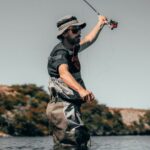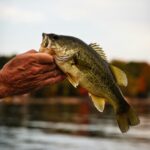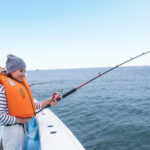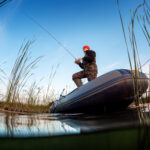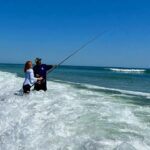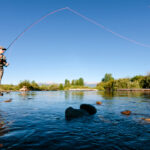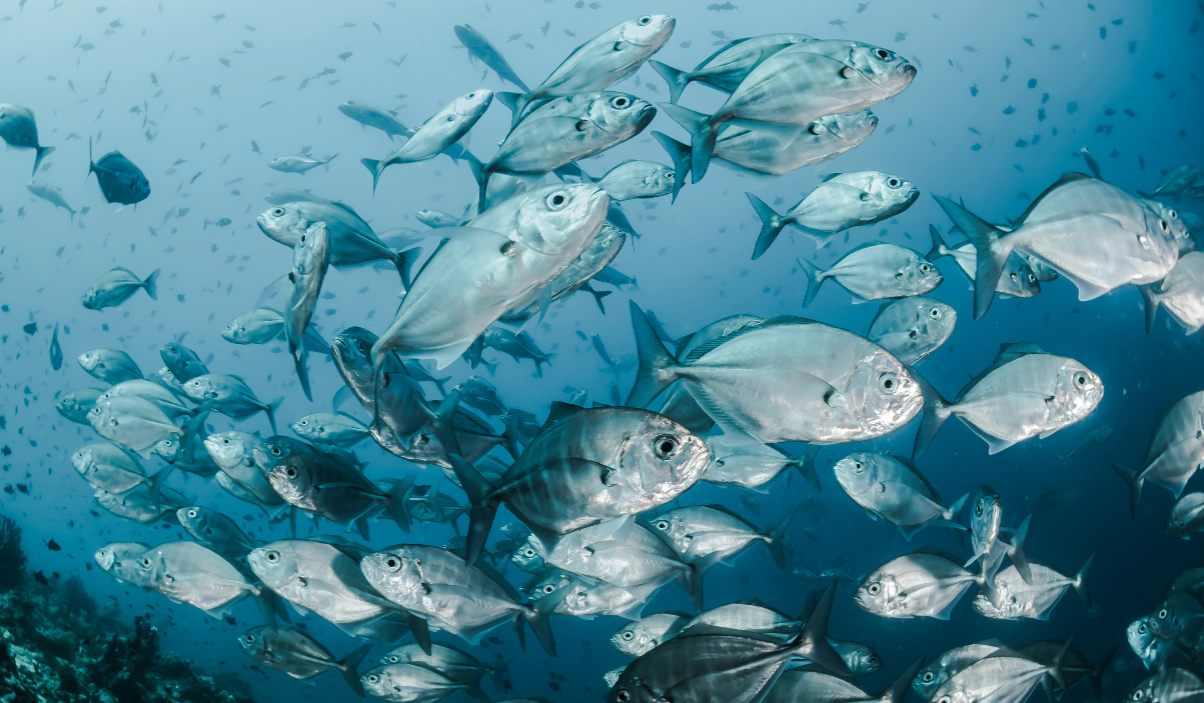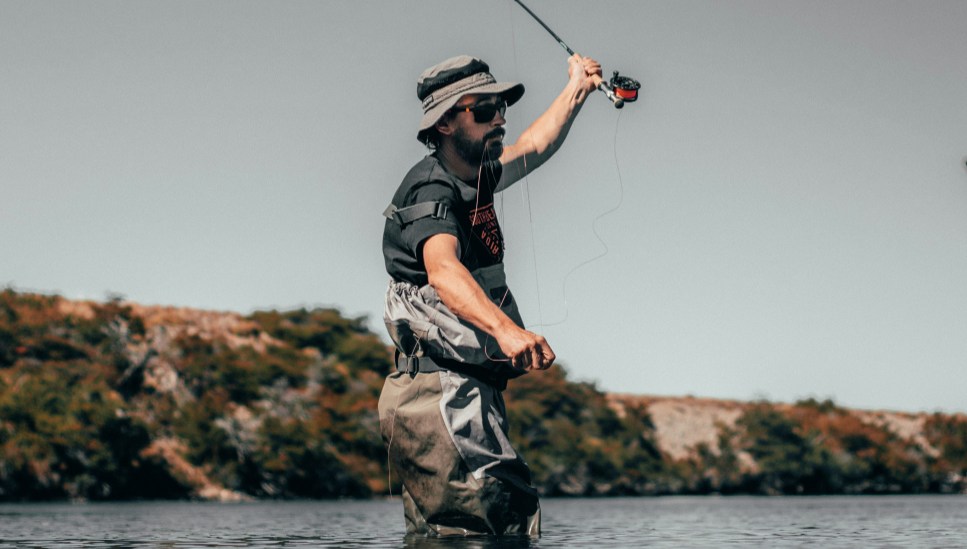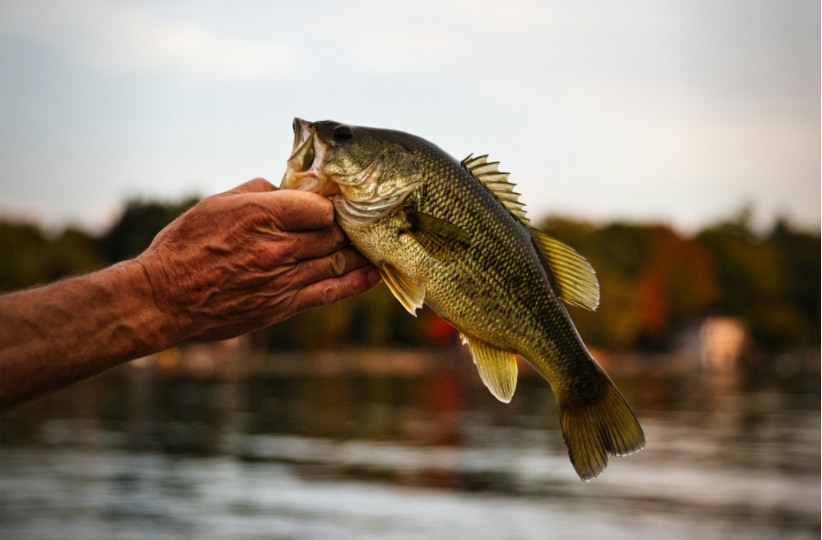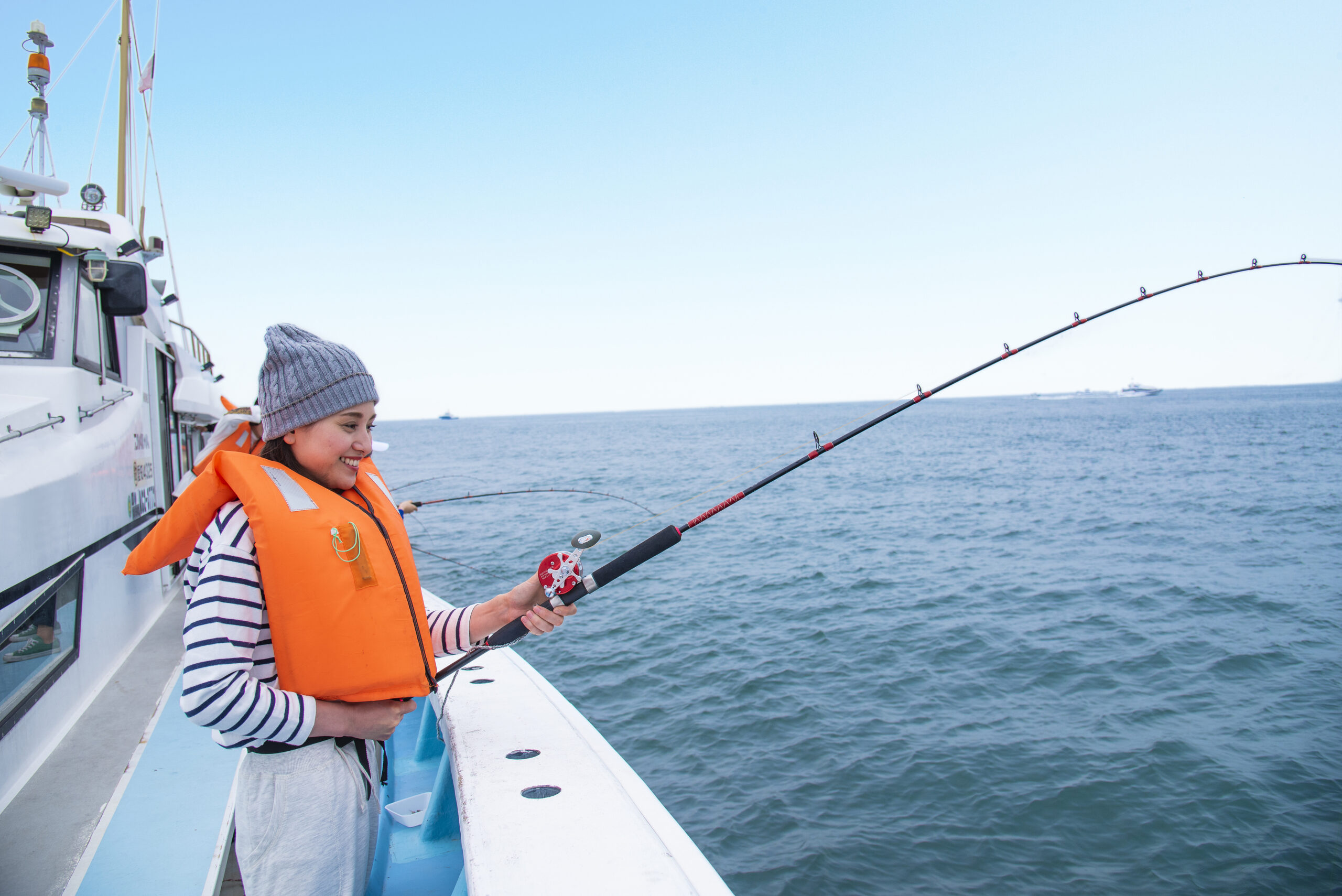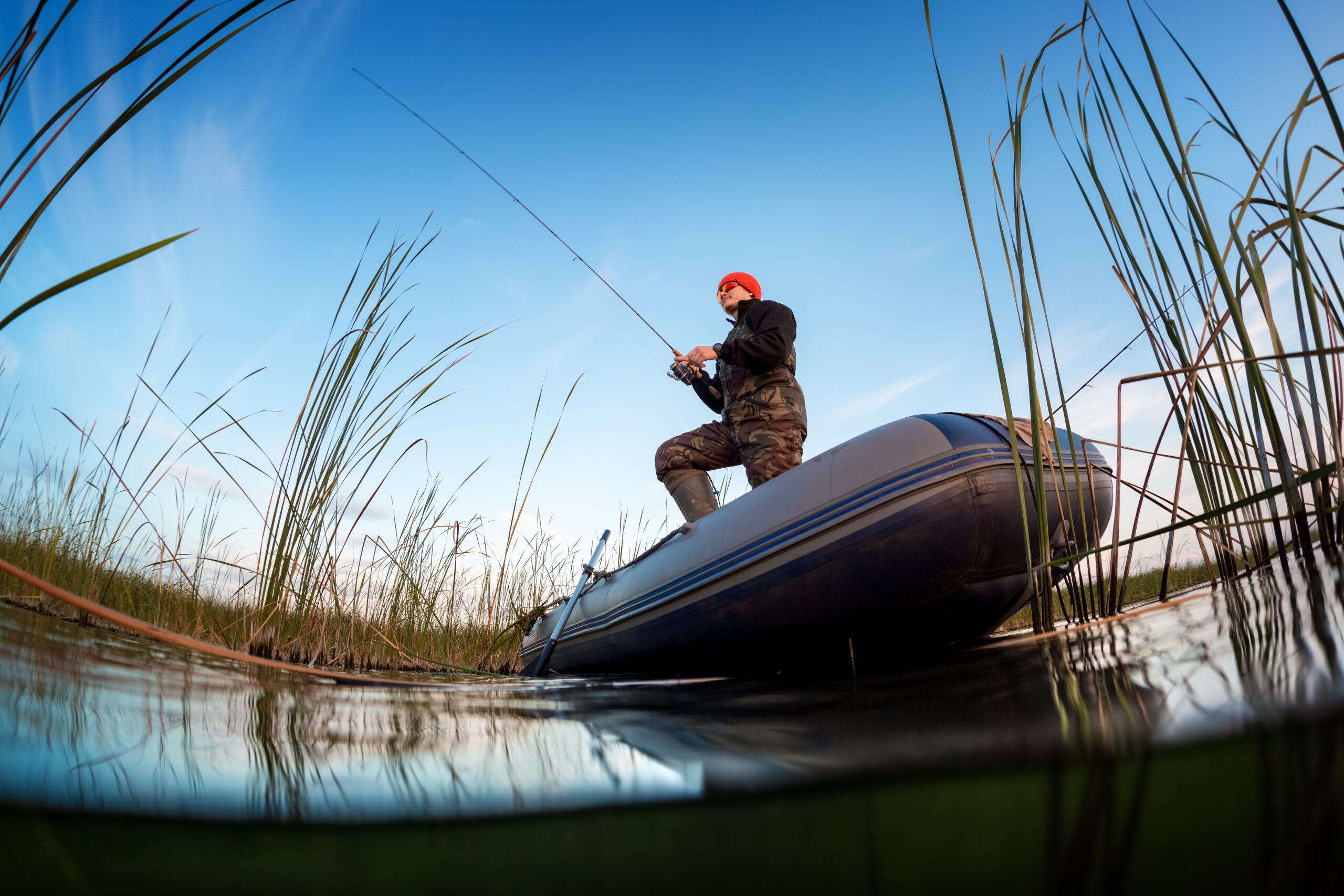When it comes to saltwater fishing, few species are as exciting and challenging to catch as the pompano and permit. While these two species share similarities, they also have distinct differences that can make identifying and targeting them tricky for anglers, especially when they’re found in similar habitats. Whether you’re a seasoned fisherman or a novice eager to expand your knowledge, understanding how to differentiate between pompano and permit, as well as learning the best strategies for catching them, can make all the difference in your next outing.
In this guide, we’ll break down how to identify these two sought-after species, how to tell them apart, and the most effective techniques for catching them.
Identifying Pompano vs Permit
While both pompano and permit are prized for their delicious meat and thrilling fight, they belong to different families and have unique physical traits. Here’s a breakdown of how to identify each species:
Pompano (Trachinotus carolinus)
Size and Shape:
- Pompano are smaller and more compact than permit, typically ranging from 12 to 24 inches and weighing between 1 to 3 pounds, though some larger specimens can reach up to 5 pounds.
- They have a deep, laterally compressed body with a slightly rounded shape, which gives them a flattened, almost disk-like appearance.
- Their dorsal fin is more prominent and their tail is slightly forked.
Color:
- Pompano sport a bright, silvery color, often with a golden or yellowish hue along the sides. This gives them a shimmering appearance when seen in the water, especially in bright sunlight.
- Their belly is usually white, and their back has a light grayish tint.
Habitat:
- Pompano are typically found in shallow coastal waters, including estuaries, sandy beaches, and nearshore reefs. They prefer waters with sandy bottoms, which they often frequent in search of food.
- They are more abundant in warmer waters, from Florida to the Gulf of Mexico, and as far south as the Caribbean.
Feeding Behavior:
- Pompano are primarily bottom feeders that target small crustaceans like crabs, shrimp, and sand fleas, as well as small mollusks. They tend to be active during the day, often feeding in the surf or near shallow sandbars.
Permit (Trachinotus falcatus)
Size and Shape:
- Permit are larger and more powerful than pompano, typically ranging from 18 to 30 inches and weighing anywhere from 10 to 30 pounds, though larger specimens can exceed 50 pounds.
- They have a long, narrow body with a more torpedo-like shape and a slightly pointed nose.
- Their tail is slightly more pronounced and sickle-shaped compared to the pompano.
Color:
- Permit have a shiny silver body with a more pronounced darker back. Their body often has blue-gray undertones, and their sides can appear more iridescent than a pompano’s.
- Their belly is white, similar to a pompano, but they typically lack the golden-yellow coloring seen on a pompano’s sides.
Habitat:
- Permit are more commonly found in deeper waters near coral reefs, wrecks, or mangrove islands, though they do move into shallow sandy flats during certain times of the year, particularly when they’re feeding on crustaceans.
- They are more solitary than pompano and tend to stick to areas where there is significant structure, like deep drop-offs or coral reefs.
Feeding Behavior:
- Permit primarily feed on crabs, mollusks, and shrimp, and they are known for being particularly picky eaters, often preferring live bait or freshly caught crustaceans.
- Their feeding behavior is more deliberate and less frenetic than that of pompano. Permit are also known to be more selective about the size and quality of their food.
Key Differences Between Pompano and Permit
| Trait | Pompano | Permit |
|---|---|---|
| Size | Smaller, up to 5 pounds | Larger, up to 50 pounds or more |
| Body Shape | Round, compressed | Elongated, torpedo-shaped |
| Color | Shimmering silver with yellowish sides | Silver with a bluish tint and darker back |
| Tail | Slightly forked | Sickle-shaped, more pronounced |
| Feeding Behavior | Bottom feeders, more active in shallow waters | More selective, often in deeper waters |
| Habitat | Shallow coastal areas, sandy beaches | Coral reefs, wrecks, deeper flats |
How to Catch Pompano and Permit
Now that you know how to identify pompano and permit, let’s dive into the best techniques for targeting each species.
Catching Pompano
Pompano are often easier to target than permit due to their smaller size and more predictable feeding behavior. Here’s how to go about it:
Best Time to Fish:
- Dawn and dusk are the prime times for pompano, as they are most active during these cooler parts of the day.
- They are also more active during incoming or outgoing tides, which brings more food into the shallows.
Tackle and Gear:
- Use a medium-light spinning rod with 10-20 lb test line. Pompano are not overly strong, so you don’t need heavy-duty gear.
- A small, strong hook (size 2 to 4) and light leader are ideal for targeting these smaller fish.
Bait and Lures:
- Pompano love sand fleas (also known as mole crabs), shrimp, and clams. Using these as live or cut bait is a surefire way to attract them.
- Artificial lures like small jigs, spoons, or pompano rigs (a combination of two hooks with beads and a sinker) can be effective when fishing in the surf or near sandbars.
Techniques:
- Cast your bait near sandbars or drop-offs in 2 to 10 feet of water. Pompano will be in search of food in these areas, especially when the tide is moving.
- Slow, steady retrieval of lures, or simply letting your bait sit on the bottom, often works best.
Catching Permit
Catching permit can be a bit more challenging due to their size, strength, and finicky nature. Here’s how to target them:
Best Time to Fish:
- Like pompano, early mornings and late evenings are the best times, but permit can also be caught during the day, particularly when they are feeding.
- Tides play a significant role. Permit are known to feed during slack tides, when the water movement is minimal.
Tackle and Gear:
- For permit, you’ll need a medium to heavy spinning rod with 20-30 lb test line to handle their larger size and powerful runs.
- Use a stronger hook (size 1/0 to 3/0), and a 30-40 lb test fluorocarbon leader to withstand abrasion from rocks or coral.
Bait and Lures:
- Permit are crab specialists, so using live crabs (especially blue crabs) is one of the best ways to catch them. Mollusks like conchs also work well.
- Artificial lures like soft plastic crabs or jigs imitating crabs or shrimp can also be effective, but they should be presented carefully to avoid spooking the fish.
Techniques:
- Permit are often found near wrecks, reefs, or mangrove islands in 10 to 40 feet of water. Cast your bait or lure near structures where permit are likely to be hunting.
- Slow, deliberate retrieves work best. Permit are cautious, so giving them time to inspect and take the bait is key. Be patient!
Conclusion
While both pompano and permit are sought-after species for saltwater anglers, they require different approaches in terms of identification and fishing techniques. Pompano are more abundant in shallow, sandy waters and are easier to catch with simple rigs and baits. Permit, on the other hand, demand a bit more skill and patience, as they are larger, more selective feeders, and are often found in deeper, more structured waters.
Knowing the differences between these two species will make you a more informed and effective angler. Whether you’re casting for pompano in the surf or stalking permit in deeper waters, both fish offer a thrilling challenge and a delicious catch. So grab your gear, choose your bait wisely, and get ready for an unforgettable fishing adventure!

